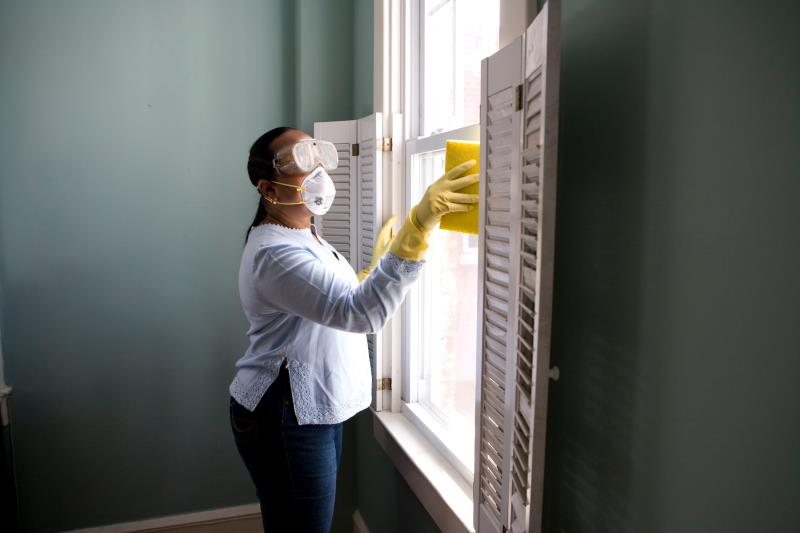 (Photo credit: CDC/Unsplash)
(Photo credit: CDC/Unsplash)A multipronged surveillance and containment strategy—involving rapid identification and isolation of coronavirus disease 2019 (COVID-19) cases, quarantine of close contacts, and active monitoring of other contacts, among others—has proven effective in controlling local transmission of the disease in Singapore, as shown in a study.
On 2 January, days after the first report of COVID-19 from China, the Ministry of Health (MOH) developed a local case definition for use by physicians to pinpoint suspected COVID-19 patients at medical consults. [https://www.moh.gov.sg/news-highlights/details/ministerial-statement-on-whole-of-government-response-to-the-2019-novel-coronavirus-(2019-ncov)]
A suspect case of COVID-19 was defined as an individual presenting with an acute respiratory illness of any degree of severity who had travelled internationally within 14 days of illness onset. These cases were then tested for SARS-CoV-2, the virus responsible for the disease, by reverse transcription–polymerase chain reaction (RT-PCR) or a positive viral microneutralization antibody test. Physicians used a centralized disease notification system to record all suspected and confirmed patients.
From there, the government implemented surveillance measures that included tracing contacts of confirmed COVID-19 patients, enhancing surveillance among different patient groups (pneumonia, ICU patients with possible infectious diseases, primary care patients with influenza-like illness, and deaths from possible infectious aetiologies), and giving clinicians the option to order a test based on clinical suspicion, even if the case definition was not met.
Containment initiatives, such as isolation and quarantine, active monitoring of contacts, border controls, and community education and precautions, were additionally executed to minimize disease spread.
Efficacy in first 100 cases
The investigators assessed the effectiveness of the described multipronged strategy from the outbreak’s start until February 29 by calculating the 7-day moving average of the interval from symptom onset to isolation in hospital or quarantine. This measure was an estimate of the time spent within the community when a person with COVID-19 was potentially infectious.
The analysis involved the first 100 confirmed COVID-19 local cases (median age, 41 years; 60 percent male), of which 24 were imported, while the remaining cases resulted from local transmission. Contact tracing led to the primary detection of 53 COVID-19 patients, whereas 20 were pinpointed at clinics or hospitals due to having met the case definition. Sixteen patients were isolated through enhanced surveillance (15 from pneumonia surveillance and one from the ICU), while the remaining 11 were identified through medical providers’ clinical discretion. [MMWR Morb Mortal Wkly Rep 2020;69:307-311]
A significant difference in the percentage of cases detected by the various surveillance methods emerged, contingent on whether the cases were linked to another COVID-19 patient or by travel to China as opposed to cases that could not be linked to another case (p<0.001). The majority of linked cases (62.7 percent) were detected through contact tracing, whereas most unlinked cases (58.8 percent) were detected through enhanced surveillance.
The earliest symptom onset date reported by a COVID-19 patient was on 14 January. The number of infected patients peaked on 30 January, when nine were identified, before declining to between two and five per day on 11 February and afterward.
International importations made up most cases at the outbreak’s start before more local cases were detected. The mean interval from symptom onset to hospital isolation or quarantine was 5.6 days. The 7-day moving average of the interval from symptom onset to isolation declined significantly across the study period, from 9.0 to 0.9 days for imported cases and from 18.0 to 3.1 days for local cases (p<0.001). Thirteen of 53 patients (24.5 percent) first identified through contact tracing were contacted on or before the date of symptom onset.
Broad surveillance coverage
The case definition served as the foundation for isolating suspected cases early on, and active case finding around COVID-19 patients through contact tracing contributed to identifying new patients for isolation, according to the investigators.
“The surveillance methods … complemented one another to identify infected persons, with the overlapping components constituting safety nets; none of the methods alone would have detected all patients,” they noted.
More importantly, the enhanced surveillance measures of SARS-CoV-2 testing of all patients with pneumonia, surveillance of ICU patients with severe illness and deaths potentially attributable to COVID-19, and clinical discretion in requesting testing proved to be instrumental in detecting initially unlinked patients for further investigation.
“Adoption of multiple surveillance mechanisms can ensure broad coverage because each missed case can lead to chains of transmission that might be difficult to contain subsequently,” according to the investigators, adding that such measures might be useful for enhanced case detection and reduced transmission of highly infectious diseases such as COVID-19.
“Singapore is a small island city-state, and nations with other characteristics might need to adapt and augment Singapore’s approaches to achieve the same level of effectiveness,” they said.